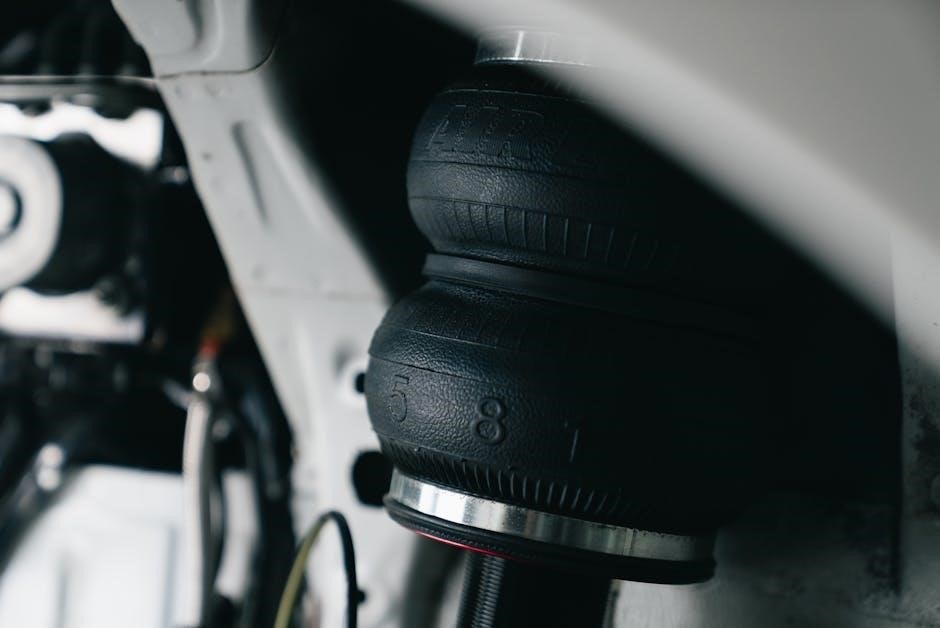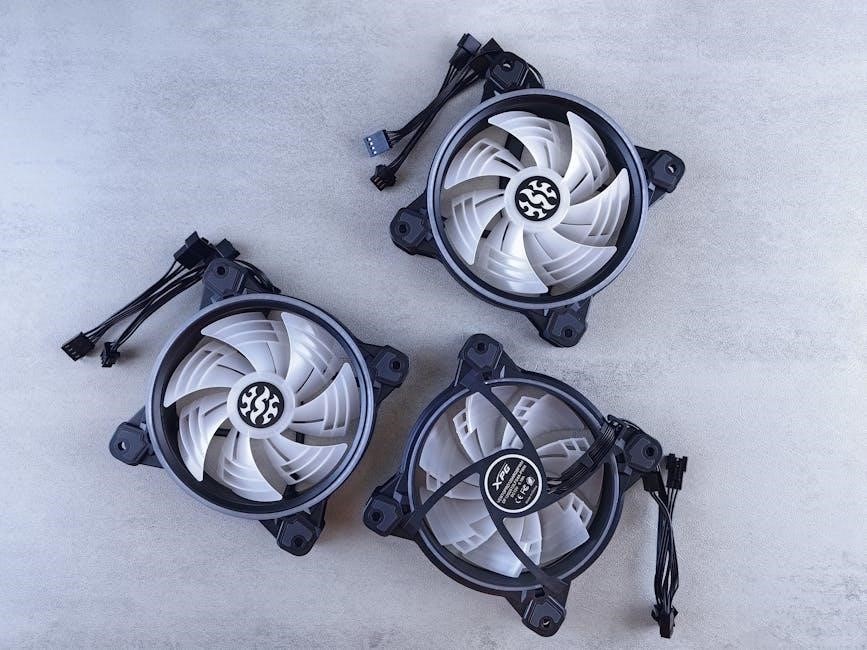
honeywell 8000 thermostat installation guide
Welcome to the Honeywell 8000 Thermostat Installation Guide. This comprehensive guide will help you install and configure your Honeywell VisionPRO TH8000 series thermostat efficiently. Designed for both residential and commercial use, this programmable thermostat offers advanced features like energy-saving modes, smart scheduling, and Wi-Fi connectivity. Follow the step-by-step instructions to ensure proper setup and optimize your HVAC system’s performance.
Overview of the Honeywell 8000 Thermostat
The Honeywell 8000 Thermostat is a high-efficiency, touchscreen-controlled device designed for seamless integration with various heating and cooling systems. It features a large, backlit display for easy navigation and supports advanced scheduling options. With its intuitive interface, users can customize settings to optimize energy usage and comfort. The thermostat is compatible with conventional HVAC systems and heat pumps, making it versatile for different home setups. Its sleek design and robust functionality make it a popular choice for modern smart home solutions.
Importance of Proper Installation
Proper installation of the Honeywell 8000 Thermostat is essential for ensuring optimal performance, energy efficiency, and system safety. Incorrect installation can lead to malfunctions, increased energy bills, or even potential safety hazards. A well-installed thermostat ensures accurate temperature control, efficient HVAC operation, and extended system longevity. Following manufacturer guidelines and safety protocols guarantees a reliable setup, preventing future issues and maintaining warranty validity. Proper installation also ensures compliance with electrical and HVAC standards, safeguarding your home and system.
Safety Precautions
Always disconnect power before installation to avoid electrical shocks or system damage. Ensure proper grounding and handle components with care to prevent damage or injury.
- Avoid overreaching or standing on unstable surfaces during installation.
- Keep the thermostat away from flammable materials and direct water exposure.
Disconnecting Power Before Installation
To ensure safety, turn off the HVAC system at the circuit breaker or fuse box before starting installation. Verify the power is off using a voltage tester. Failure to disconnect power can cause electrical shocks, injuries, or damage to the thermostat. Always wait a few minutes for the system to cool down. If unsure about the process, consult a licensed electrician to avoid potential hazards. Proper power disconnection is critical for a safe and successful installation.
- Locate the circuit breaker controlling the HVAC system.
- Switch it off and confirm the system is powered down.
Hazardous Conditions and Prevention
To avoid hazards during installation, ensure the area is free from flammable materials and excessive moisture. Prevent electrical shocks by verifying power is off before handling wires. Avoid installing the thermostat near open flames or sparks. Ensure proper ventilation to prevent gas leaks from HVAC systems. If the system involves combustible fuels, verify correct venting to prevent carbon monoxide buildup. Always follow local safety codes and manufacturer guidelines to minimize risks during and after installation.
- Avoid areas with high humidity or water exposure.
- Check system compatibility to prevent gas leaks.

Pre-Installation Steps
Before starting, gather all tools and materials, and ensure the system is compatible with your HVAC setup. Always disconnect power and label wires for clarity.
- Gather tools like screwdrivers and voltage testers.
- Check system compatibility to ensure smooth installation.
Tools and Materials Required
To install the Honeywell 8000 thermostat, you’ll need specific tools and materials. These include a flathead and Phillips screwdriver, voltage tester, drill with bits, level, pliers, and wire strippers. Materials required are wall anchors, the thermostat’s wallplate, trim ring, screws, wires, and a power cord. Ensure all items are readily available to streamline the installation process and avoid delays.
- Flathead and Phillips screwdrivers for removing old thermostats and mounting the new one.
- Voltage tester to ensure safe working conditions.
- Drill and bits for drilling holes in walls if necessary.
- Level to ensure proper alignment of the thermostat.
- Pliers and wire strippers for handling wires.
- Wall anchors for securing the wallplate in drywall or plaster.
- Thermostat wallplate, trim ring, and screws provided with the Honeywell 8000.
- Wires and a power cord if not already pre-installed.
Understanding System Compatibility
Ensure the Honeywell 8000 thermostat is compatible with your HVAC system. It supports conventional, heat pump, and dual fuel systems, including single-stage, multi-stage, and modulating configurations. Verify your system type and stage capacity to avoid installation issues; The thermostat is also compatible with most wiring setups and works with optional equipment like humidifiers and air cleaners. Always confirm compatibility with your specific HVAC system before proceeding with installation.
- Compatible with conventional, heat pump, and dual fuel systems.
- Supports single-stage, multi-stage, and modulating systems.
- Works with optional equipment like humidifiers and air cleaners.
- Compatible with most standard wiring configurations.

Wallplate Installation
Mount the wallplate to ensure proper thermostat fitting. Secure wires to the plate, align it straight, and screw it firmly into place without damaging the wall.
Mounting the Wallplate
Begin by removing the old thermostat and ensuring the area is clean. Peel the backing from the wallplate’s adhesive and align it with the marks made earlier. Press firmly to secure it. If using screws, drill pilot holes, insert anchors, and screw the wallplate into place. Ensure it is level and straight. Connect the wires to the appropriate terminals, following the wiring diagram. Tighten all connections securely. Verify the wallplate is stable and properly mounted before proceeding.
Drilling Holes for Drywall and Plaster
Begin by marking the wall where the wallplate will be mounted, ensuring alignment with any existing wiring. For drywall, use a drill with a small bit to create pilot holes. For plaster walls, apply gentle pressure to avoid cracking. Insert wall anchors if necessary. After drilling, remove any debris and ensure the holes are clean. Check that the wallplate fits securely, adjusting the holes if needed. Proceed with mounting once the surface is prepared and stable.

Wiring the Thermostat
Identify and connect the appropriate wires to the thermostat terminals, referring to the wiring diagram in the manual. Ensure all connections are secure and correctly labeled. Verify compatibility with your HVAC system type to avoid errors. Double-check for loose connections before powering up the system to prevent malfunctions or safety hazards.
Conventional System Wiring
For conventional systems, connect the R (24V) wire to the R terminal and the W wire to the W terminal for heating. The Y wire connects to the Y terminal for cooling. Ensure the G wire is connected to the G terminal for fan operation. If present, connect the C (common) wire to the C terminal to provide power. Verify all connections match your system’s wiring diagram. Double-check for proper wire labeling and secure all connections to avoid system malfunctions or safety risks.
Heat Pump System Wiring
For heat pump systems, connect the R wire to the R terminal and the W wire to the W terminal for heating. The Y wire connects to the Y terminal for cooling. The G wire goes to the G terminal for fan operation. The O/B wire connects to the O/B terminal to control the reversing valve, and the AUX wire links to the AUX terminal for auxiliary heat. Ensure the C wire is connected if required. Always refer to your system’s wiring diagram to confirm connections and prevent malfunctions.

System Setup
After restoring power, select system type, set temperature scale, and configure basic scheduling and IAQ preferences in the setup menu for optimal performance.
Installer Options and Application Selection
Configure installer options to customize system settings, such as heating and cooling stages, fan operation, and compatibility with auxiliary devices. Select the application type (e.g., conventional, heat pump) to match your HVAC system. Ensure correct parameter settings for proper operation. Use the menu to enable or disable features like adaptive recovery or remote sensors. Refer to the system compatibility guide to confirm settings align with your equipment. Proper selection ensures optimal performance and efficiency; Navigate through menus to save your configuration.
Setting Up the Display Preferences
Customize the thermostat’s display to suit your preferences. Adjust brightness settings to optimize visibility in various lighting conditions. Set the screen timeout duration to conserve energy or maintain constant visibility; Choose from different color themes to match your home decor. Select the preferred language for the display. Configure units of measurement (Fahrenheit or Celsius). These settings enhance user experience and ensure seamless operation. Navigate through the menu to confirm and save your display preferences for optimal functionality. Proper configuration ensures a personalized and efficient system interface.

Connecting to Wi-Fi
Access the thermostat menu to enable Wi-Fi connectivity. Select your network from the list, enter the password, and confirm. Ensure stable internet connection for smart features.
Wi-Fi Network Connection Process
Navigate to the thermostat’s menu and select “Wi-Fi Setup.” Choose your network from the available list. Enter the password using the on-screen keyboard. The thermostat will connect and confirm linkage. Ensure the router is nearby for optimal signal strength. If prompted, enable pairing mode. Once connected, the thermostat will update and sync with Honeywell Home systems. Verify connection status on the display. If issues arise, restart the thermostat and retry the process.
Registering the Thermostat
After connecting to Wi-Fi, access the thermostat’s menu and select “Register Device.” Enter the unique registration code found on the packaging or device label. Create or sign in to your Honeywell Home account. Follow on-screen prompts to link the thermostat to your account. Ensure all information is accurate for proper registration. Once complete, the thermostat will sync with your account, enabling remote access and advanced features. Verify registration success through the Honeywell Home app or website.
Advanced Features Configuration
Configure advanced features like scheduling, IAQ settings, geofencing, and smart recovery to enhance comfort and efficiency. Follow on-screen instructions for proper setup and customization.
Setting Schedules and IAQ Settings
Set custom schedules for heating and cooling to optimize energy use and comfort. Navigate to the scheduling menu and assign temperature targets for different times of the day. For IAQ settings, enable ventilation control to manage indoor air quality. Adjust settings to balance humidity and air freshness. Use the thermostat’s smart features to automate these settings based on occupancy and outdoor conditions. Ensure proper integration with your HVAC system for maximum efficiency and air quality benefits.
Enabling Geofencing and Smart Recovery
Geofencing uses your smartphone’s location to adjust the thermostat when you leave or arrive home. Enable this feature in the settings menu under location-based control. Smart Recovery learns your schedule and starts heating or cooling early to reach your desired temperature on time. Activate these features to enhance energy efficiency and comfort. They work together to optimize your system’s performance based on your lifestyle and preferences, ensuring energy savings without compromising comfort.

Initial Testing
Turn on the power and ensure the display lights up. Test basic functions like temperature adjustment and system mode changes to verify proper operation.
Performing an Installer Test
After installation, perform a full system test to ensure proper operation. Check heating, cooling, and fan modes. Verify temperature adjustments and system responses. Test all wiring connections to confirm correct functionality. Use the thermostat’s built-in diagnostic tools to identify any issues. Ensure the display accurately reflects system status and user inputs. Address any malfunctions or errors promptly to guarantee reliable performance. This step ensures the Honeywell 8000 thermostat operates as intended, providing consistent comfort and efficiency.
Verifying System Operation
After installation, verify the Honeywell 8000 thermostat’s operation by checking all modes. Test heating, cooling, and fan modes to ensure correct system responses. Adjust the temperature and confirm the display reflects changes. Check for proper stage transitions in multi-stage systems. Verify humidity control and ventilation settings, if applicable. Ensure the system cycles on and off correctly. Use visual and auditory cues, like the thermostat’s display and system sounds, to confirm operation. This verification ensures the system functions as intended, providing accurate temperature control and comfort.

Troubleshooting Common Issues
Troubleshoot common issues like unresponsive displays or incorrect temperature readings. Check power sources, wiring connections, and system compatibility. Restart the thermostat and ensure proper installation.
Connection Failed Screens and Solutions
Address “Connection Failed” screens by verifying Wi-Fi credentials and network stability. Ensure the thermostat is within router range and using the correct 2.4GHz network. Restart both the thermostat and router. Check for firmware updates and confirm the network name matches the one selected; If issues persist, factory reset the thermostat and reconnect. Consult the user manual for detailed troubleshooting steps and ensure all settings are correctly configured for a seamless connection.
Hidden Wi-Fi Network Setup
For hidden Wi-Fi networks, manually enter the SSID and password in the thermostat’s settings. Ensure the network is 2.4GHz, as 5GHz is unsupported. Navigate to the thermostat’s Wi-Fi menu, select “Hidden Network,” and input the credentials. Verify the network name and password from your router settings. If difficulties arise, consult the router’s documentation or reset the thermostat and retry the connection process. Ensure the network is properly configured for a successful setup.

Maintenance and Care
Regularly clean the thermostat with a soft cloth to maintain functionality. Check and replace batteries as needed to ensure optimal performance and extend product lifespan.
Cleaning the Thermostat
Regular cleaning ensures optimal performance. Use a soft, dry cloth to gently wipe the thermostat’s display and exterior. Avoid harsh chemicals or liquids, as they may damage the device. For stubborn dust, slightly dampen the cloth but ensure no moisture enters the thermostat. Clean every 1-2 months to prevent dust buildup. Always turn off power at the circuit breaker before cleaning to avoid electrical hazards. This simple maintenance step helps maintain accuracy and extends the product’s lifespan. Check for any software updates after cleaning for enhanced functionality.
Battery Replacement
The Honeywell 8000 thermostat does not require batteries for standard operation, as it is hardwired. However, some models may have optional battery backup for memory retention during power outages. If applicable, replace the batteries (typically AA or AAA alkaline) by turning off power at the circuit breaker. Locate the battery compartment, usually at the bottom or side, and replace the batteries following the polarity markings. After installation, restore power and test the thermostat. Replace batteries every 1-2 years or when the display indicates low battery. Dispose of old batteries safely and recycle if possible.

Safety Guidelines
Ensure safe operation by maintaining ambient temperature between 32°F and 122°F (0°C to 50°C) and humidity below 80%. Follow all local electrical codes and regulations.
Operating Ambient Temperature and Humidity
The Honeywell 8000 thermostat operates effectively within an ambient temperature range of 32°F to 122°F (0°C to 50°C) and relative humidity below 80%. Ensure the thermostat is installed in a location free from extreme temperature fluctuations or moisture exposure. Avoid areas near direct sunlight, radiators, or drafty windows to maintain accurate temperature sensing. Compliance with these guidelines ensures optimal performance, reliability, and longevity of the device. Always follow the manufacturer’s recommendations for environmental conditions.
Physical Dimensions and Compliance
The Honeywell 8000 thermostat measures approximately 4.5 inches in width and 3.5 inches in height, ensuring compatibility with standard wall dimensions. It weighs around 6.4 ounces, making it lightweight for easy installation; The device complies with UL (Underwriters Laboratories) standards for safety and performance. Ensure the thermostat is mounted securely to prevent damage or misalignment. Proper installation within these specifications guarantees reliable operation and adherence to safety guidelines. Always verify local building codes for additional compliance requirements.
Final Checks and System Optimization
Ensure all connections are secure, settings are configured, and the system operates smoothly. Test heating, cooling, and Wi-Fi functionality to confirm optimal performance and efficiency.
After installation, perform a thorough system check to ensure all components function correctly. Verify heating, cooling, and fan modes, and confirm the display responds properly. Check Wi-Fi connectivity and test geofencing and smart recovery features. Review and optimize scheduling and IAQ settings for energy efficiency. Ensure all wiring connections are secure and the wallplate is properly mounted. Finally, confirm that the thermostat operates within the recommended ambient temperature and humidity range for optimal performance and longevity.
Resources for Further Assistance
For additional support, refer to the Honeywell 8000 thermostat user manual or visit the official Honeywell website. Contact Honeywell customer support at 1-800-645-7490 or via email for technical inquiries. Online forums and video tutorials also provide troubleshooting tips and installation guidance. Ensure to consult certified professionals for complex issues. These resources help resolve concerns and optimize system performance effectively.

the glass castle pdf
You May Also Like

owlet sock instructions
June 26, 2025
carnivore diet food list pdf
June 11, 2025